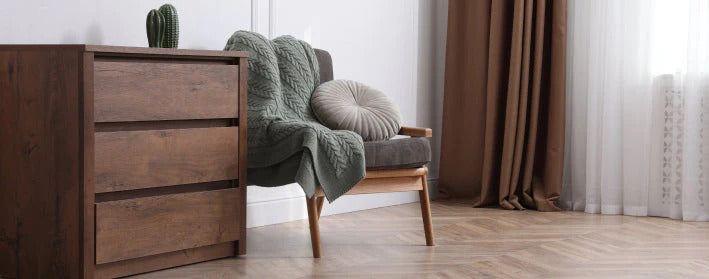Protection
Scratches are normal and very hard to avoid with real wood but the following tips will help prevent this as much as possible:
- Use felt pads under furniture and chairs.
- Check shoes, especially heels and football boots for metal and other hard materials that may leave marks.
- Install door mats at entrances to help remove any dirt, stones, and moisture from the bottom of shoes.
- Lift items, don’t drag them
- Use maintenance oils or lacquer protection.
Heat and humidity
When installing and maintaining an engineered floor it is important to ensure site conditions are suitable. Wood is a natural product and subject to change when exposed to varying levels of moisture and heat. Before installing an engineered floor it is important to get a moisture reading between 7% - 9% in at least 20 spots per 1,000 sq feet.
Humidity in the room should be kept between 40-65%RH. This is a normal range for houses in the UK and Ireland. If this is something you have concerns about you can use a hygrometer to measure the humidity level in your home.
The room of installation should be kept between 16-28°C which is something the most homes or commercial environments will normally be within.
Cleaning
Regular cleaning of an engineered floor should include hoovering with a brush head attachment. You can also use a well-drained damp mop and a suitable wood cleaner to obtain a better finish. There are different types so ensure to always read the label.
Additional Info
- Engineered floors will expand and contract with change in heat and moisture.
- Spillages must be cleaned immediately to avoid damage.
- Colouring of the floor will change over time.
- Oiled flooring required more maintenance than lacquered.






























